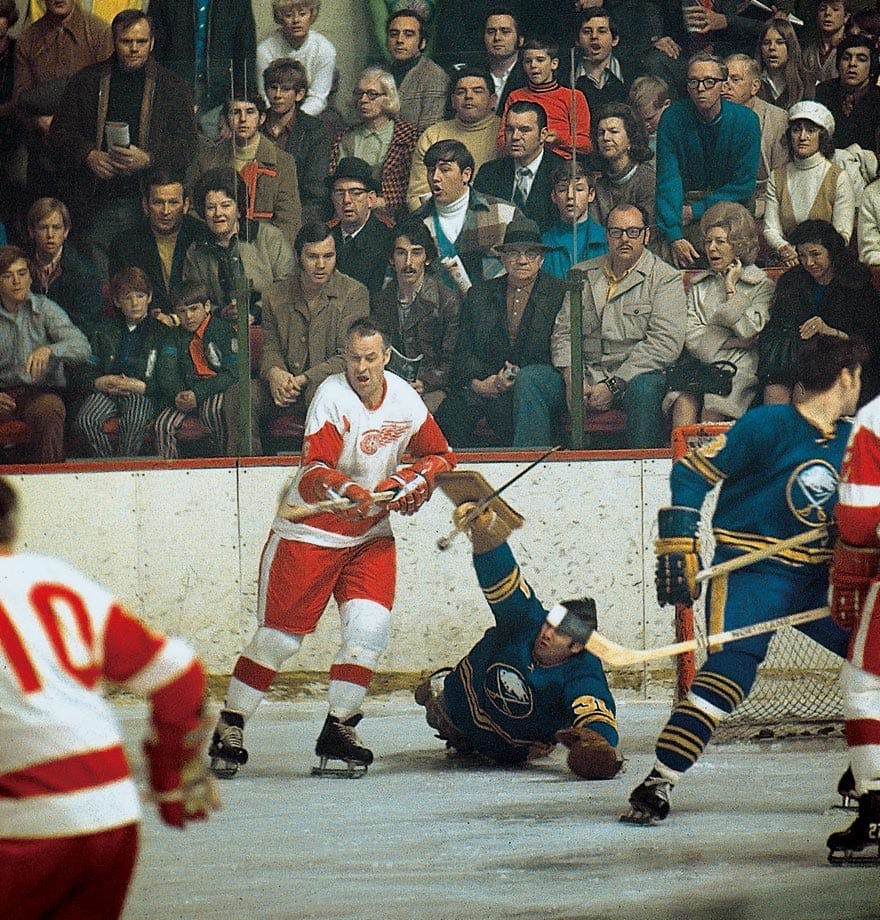Friday Folklore – The Production Line

By Craig Jones
3 years agoThe Wings have a history of great line monikers. The Grind Line, The HUM Line, The Russian Five, even the modern-day MLB Line are all classics. While it may not be the sexiest, The Production Line was the original and also reflected a double entendre. During the 40s, Detroit was the production capital of the United States, however, to help contribute to the war effort, they were forced to shift from the auto industry to manufacturing machines and supplies. Motor City was proud to contribute but, like all of us, they needed something to keep their mind off things. Insert the Wings. The Red and White were able to win the Stanley Cup during the 1942-43 season. They went on a drought until Tommy Ivan replaced Jack Adams as head coach prior to the 1947-48 season. That’s when The Production Line was born.

Failed to load video.
Failed to load video.
Production Line – Original
Tommy Ivan didn’t waste any time revamping the makeup of the Wings line-up. The belief had always been to spread your best players out in order to strengthen each line and the team as-a-whole. Instead, Ivan took his team’s two best players and lined them up next to an aging, but talented center. Gordie Howe on the right, Ted Lindsay on the left, and Sid Abel holding down the middle. Abel had missed the previous two seasons to serve in the Royal Canadian Air Force during World War II but when he got paired with the two young superstars, their chemistry was instantaneous. The trio led the Wings in scoring during their inaugural season but would go on to lose to the dominant Toronto Maple Leafs in back-to-back Stanley Cup Finals. However, there was no stopping the Production Line during the 1949-50 season. The Wings topped the league with 229 goals and 88 points, while the Production Line finished 1st (Ted Lindsay – 78), 2nd (Sid Abel – 69), and 3rd (Gordie Howe – 68) in points. This accomplishment has yet to be replicated. Detroit rode the trio into the playoffs and knocked off the defending champion Leafs in the semi-finals, before defeating the New York Rangers in a thrilling seven-game series. The original Production Line brought two Stanley Cups to Motown before Sid Abel was traded to Chicago prior to the 1952-53 season
Production Line – Act Two
Failed to load video.
Norm Ullman and Earl Reibel each had their chance to be the middle-man for the two Wings legends, but it was Alex Delvecchio who established himself as the number one centre. The trio would go on to lead the Wings to two Stanley Cups in three years. Delvecchio played the third most games ever in a Red Wings jersey, behind only Nicklas Lidstrom and Gordie Howe. The former Oshawa General also remains third in points and goals for the Wings. His performance on the Production Line helped him earn the distinction of being named one of the 100 Greatest NHL players all-time.
Production Line – Final Act
The trade and eventual retirement of “Terrible” Ted Lindsay in 1965 left a right-wing spot open on the Production Line. Frank Mahovlich stepped in to fill the role and tallied a career-best 49 goals. Unfortunately, the Wings still had a miserable 60s. Four Stanley Cup Finals losses and three missed playoffs spelt the end of the Production Line.
Every cast of the Production Line lived up to their moniker. They produced points…a lot of them. Whether it was Mr. Hockey alongside Terrible Ted, Old Bootnose, Fats, or Big M., they always had chemistry when they donned the Winged Wheel and gave Detroit fans a reason to cheer when they needed it most. This is why the Production Line will forever remain a part of Wings Folklore.
Twitter:@Jonesinthezone
Recent articles from Craig Jones





